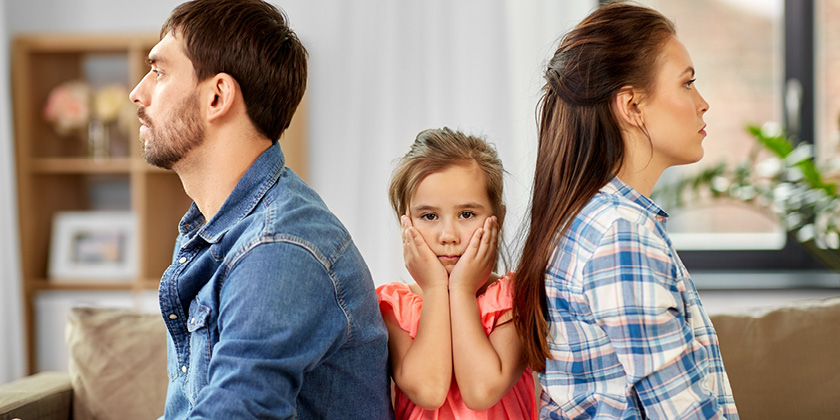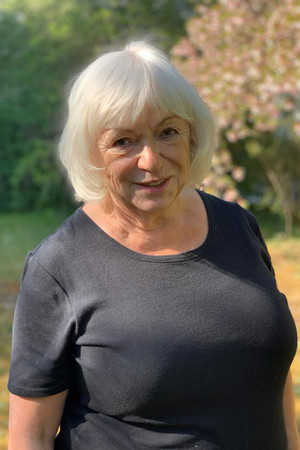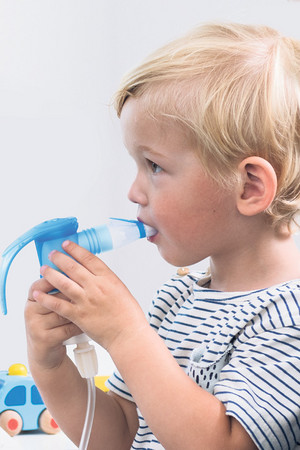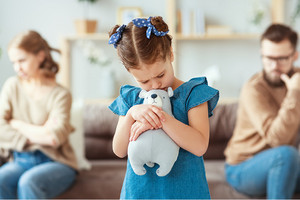
When children need to use nebulisers regularly, this can cause a lot of conflict in families. Respiratory therapist Rita Kieselmann knows this from experience. Parents come to her practice with their children to learn how use a nebuliser for inhalation therapy. They often report family problems that stem from the obligation to use a nebuliser for inhalation daily. As a physiotherapist and respiratory therapist with many years of experience, she helps parents resolve these conflicts.

Rita Kieselmann: I work with children ranging from infants to teenagers who have serious chronic respiratory diseases including cystic fibrosis, primary ciliary dyskinesia (PCD), and asthma-like diseases. In this patient population, part of their daily treatment regimen is inhalation therapy. I also see children who have acute lung illnesses, so they need to use a nebuliser for inhalation therapy for several weeks. Generally a parent, usually the child’s mother, comes to my practice with their child, and stays during the treatment. Older children who have already undergone training come on their own for treatment.
Rita Kieselmann: It isn’t only the children who need to learn the inhalation technique – their parents in particular also need to learn the ins and outs. After all, they have to help the child use the nebuliser for inhalation therapy because the child cannot do it alone in the beginning. Therefore, the first thing I need to do is get the parents on board. They need to understand what is happening in their child’s lungs, and how the inhalation therapy works there. To do this the parents have to understand the anatomy, physiology and pathophysiology of the lungs and I explain the processes to them. Depending on the age of the child, I will also explain it to the children using illustrations of the structure the lungs and how they function. It is important to communicate this information to parents and children so that they accept inhalation using a nebuliser as a therapeutic intervention and perform it correctly.
Rita Kieselmann: Yes, that’s right. Nearly all parents report having this problem at some point. In most cases, the reason is that the children feel the inhalation therapy is boring. It is difficult to communicate to children what inhaling and exhaling is. It is also harder for children than for adults to breathe consciously and to concentrate just on breathing. Breathing for us is a given and we are not aware of it unless it becomes difficult. At my practice, we try to come up with solutions together. I give parents tips on how they can motivate their child when he or she does not want to use the nebuliser. With children, I try out an idea or two instead during our treatment session. If the child really likes a certain game or a specific incentive as motivation, the parents can use this approach at home.

Rita Kieselmann: Usually there is demotivation and the problems that go with it in children aged four to ten. The children strike and resist the inhalation therapy. They perceive the inhalation process as boring, annoying and tedious. The severity and type of conflicts vary, ranging from slight pushback to fierce rows between parents and children. Parents should not try avoid these conflicts by giving in and letting the child skip the inhalation treatment. The particles and medications that are inhaled during the treatment ultimately need to produce a certain effect in the bronchial tubes. Therefore, inhalation therapy is much too important for children with respiratory diseases to skip. Parents need to be patient when trying to discuss this with their children. They have to explain to them why the inhalation therapy is necessary. Using tricks to motivate children to do inhalation therapy is absolutely a legitimate strategy. If, despite the parents’ best efforts, children still do not fully grasp the importance of their inhalation therapy, the treating physiotherapist and physicians should explain it to them again. It is absolutely okay for them to talk about the seriousness of the situation. I myself will also show my young patients explicitly what can happen if they are sloppy with their inhalation treatments. It is important to keep providing children with this information and to explain that the inhaled medications will make or keep them healthy. But it is inappropriate to frighten them.
Rita Kieselmann: The requirement to use a nebuliser can cause conflicts and stress for the entire family. After all, most children with severe chronic lung diseases often have to perform inhalation therapy two to three times a day. And many children even need to inhale several medications, which can take a long time. When there is conflict every time this has to happen, that is naturally stressful. Parents often have to process the reality that they actually wanted a healthy child, and now they have a child with a lifelong chronic illness. They are responsible for keeping their child alive to a much greater degree than the parents of healthy children. This huge responsibility often weighs heavily on these parents. They also are worried about their child’s health and life expectancy. These worries, the time-consuming inhalation therapy, and other obligations associated with the disease combined with work, managing the household, etc. lead to a feeling of being overwhelmed. This can lead to conflicts between partners. Who will assume primary responsibility for the child’s therapy? Mothers and fathers do not always have the same ideas about how the inhalation therapy should be carried out. All of this can be explosive. So inhalation therapy not only causes friction between children and parents, but also between spouses.

Rita Kieselmann: This varies a lot. Some children understand it as young as six or seven, and do their inhalation therapy without protest, others refuse until they reach puberty. Usually it is not until children reach adolescence that their parents no longer have to remind them at all and the children assume full responsibility for their therapy. But all children understand it at some point. One just hopes that they come to this understanding before their lungs are affected too much.
Rita Kieselmann: With a lot of sympathy, understanding and patients. Too much strictness and perfectionism on the part of the parents is not helpful. Some parents ask me whether children can watch television while doing their inhalation therapy so they stick with it for the entire inhalation time. This is okay, but only when children have already learned the right way to perform their inhalation therapy and have mastered it. Parents should also stay in the same room and keep an eye on their child.
Rita Kieselmann has worked as a physiotherapist and respiratory therapist for more than 45 years: She specialises in the treatment of children and parents with chronic respiratory diseases. Rita Kieselmann is the founder of the Physiotherapie im Mukoviszidose e. V. (Physiotherapy for Cystic Fibrosis) working group. She also has developed self-help techniques for clearing mucus, including modified autogenic drainage and others.
Note: The statements made in the interview are the individual views of the interviewee. They do not necessarily reflect the PARI view or the general state of science.
An article written by the PARI BLOG editorial team.
© 2025 PARI GmbH Spezialisten für effektive Inhalation